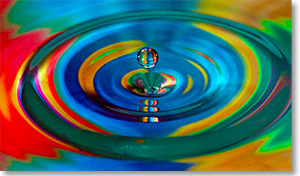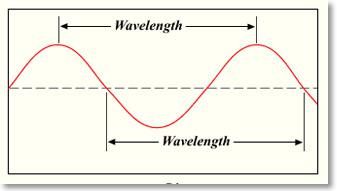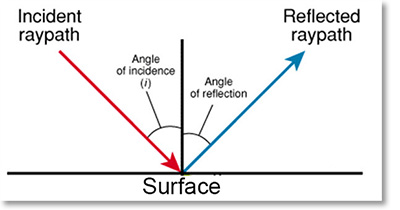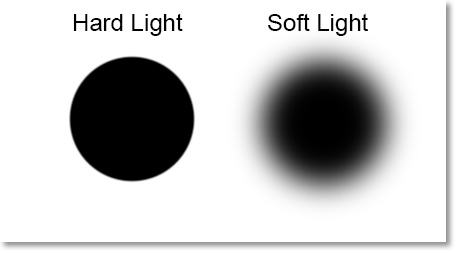EZLighting Guide: Nature of Light

At EZbackgrounds we are embarking on a new project for our members and readers. We will be studying every aspect of light as it relates to photography with an emphasis on portrait lighting.
We are going to take our time and explore a little bit at a time to allow for better retention of information and experimentation with the principles and projects put forth.
This article will article will answer questions relating to the behavior of light. As much as you might want to jump into lighting setups right away, the knowledge of how light works will yield far more benefits when you are able to "see" the light.
Seeing the Light
Light travels in waves, much like ripples in a pond when you throw a rock into the water.

These waves can be large or small depending on factors including the size of a particular light source. When we use the term “wavelength”, it is referring to the size and frequency of a light wave.

The full range of wavelengths from the shortest and the longest is called the electromagnetic spectrum. Inside that span of wavelengths is the spectrum of visible light, which is what we can see with our eyes.

The full range of visible light is exactly the same as they appear in a rainbow; violet, indigo, blue, green, yellow, orange and red.
Predicting the Angle of Light Reflection
Unlike the ripples in a pond that only travel visibly across the surface of the water, light travels in all directions from its source like an ever-expanding bubble.
If the waves encounter an obstacle straight-on, they will bounce off that obstacle and reverse course, traveling in the opposite direction.
If the waves encounter an obstacle at an angle, they will bounce off in a direction like a billiard ball would on a pool table.
There is a moderately complex mathematical formula for this, but the only thing you need concern yourself with is the concept.

You can take a flashlight and point it at the mirror to see how the light behaves in a completely predictable way.
However, most surfaces are not completely flat. You may think of the walls in your home as being flat and smooth, but it is likely that they actually have a small amount of texture. These tiny irregularities in the texture have their own angles of incidence which combine with all the other irregularities. The result is called diffusion.

Diffusion is another critical concept to understand. Since the light is being reflected at multiple angles, one could say it has a blurring effect. This creates what we could call a “soft” light, while a directly projected light would be seen as “harsh” or “hard” lighting.
Big and Soft or Small and Hard
Simply put, hard light is where the transition between highlights and shadows is sudden and distinct. Think mid-day when it’s sunny outside. Hard light makes for great shadow puppets, but is rarely good for portraiture.
Soft light has a more gradual transition or gradient between the highlights and shadows. Much like the shadows on a cloudy day, you may barely be able to tell the difference between the shadow and the highlight within the softest of light.

A main principle of lighting states that the bigger the light source in relation to the subject, the softer the light. On the other hand, the smaller the light source, the harder the light cast. This is a key concept to understand.
Stay updated with all our new releases and articles by signing up for our free email updates. We only send emails once a week to keep you updated and we NEVER spam or share your information.
If you enjoyed this article, get email free updates
Article Takeaways
1. Light travels in waves much like waves on water.
2. On a smooth, flat and level surface, light reflects from the source much like a billiard ball bouncing off the edge of pool table.
3. The surface is uneven or textured the light will diffuse better.
4. Soft light is diffused. The softer the light, the less distinct the shadow’s edge.
5. Hard light means there is a distinct line between the highlights and shadows.
6. The larger the light source, the softer the light.
7. The angle of incidence is a term that refers to the angle that light is reflected from the angle of a light that is projected.








